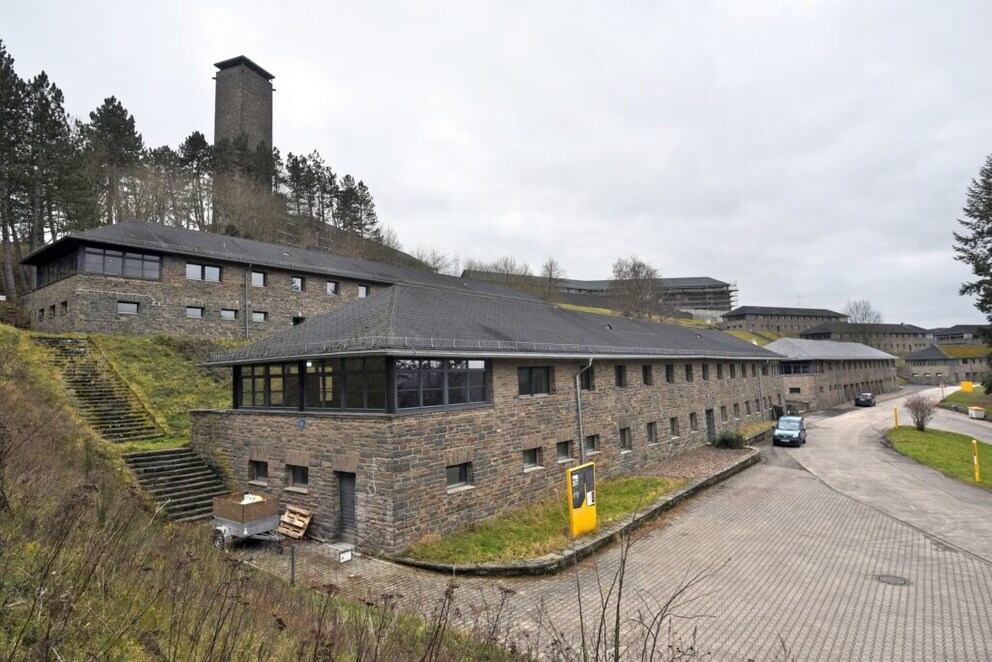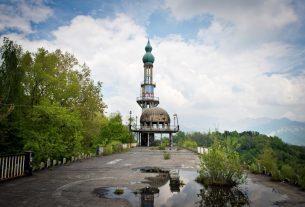The small village of Wollseifen is located in the middle of the Eifel National Park. Or rather, what remains of it today. The place hasn’t officially existed since 1946. After the end of World War II it was converted into a military training area and its inhabitants were expelled. But even today the lost village has not completely disappeared.
The word “Lost Place” is now often used in German to describe an abandoned place. The word “lost” actually means lost, and this term also applies to the small Eifel village of Wollseifen. Or rather, what remains of it today. Because its inhabitants actually lost their homeland almost 80 years ago when they were expelled from it by the British after the end of the Second World War. Until 2006 that was the status quo, Wollseifen just a ghost village. But since then life has come back here, at least a little.
It was August 18, 1946 when the bad news suddenly reached the inhabitants of Wollseifen. Their homeland, first mentioned in a document as early as the 12th century, has to be evacuated because the British want to set up a military training area here. Still Rhineland Regional Council reportedly, as one of the victorious powers in World War II, they had already taken the nearby “Ordensburg” Vogelsang from the Nazis, and now the small town itself must surrender. The approximately 550 residents who had just returned and had the heavy war damage removed are in shock. They don’t even have three weeks to leave their homes.
Lost homeland

To the “wdr extension“, said former resident Franz-Josef Sistig in 2008, what an atmosphere of doom there was in Wollseifen at the time. The official date of the evacuation was September 1, 1946 and the fruit and potatoes had not even been harvested. But nothing helped, 120 families had to look for a new place to live almost overnight. Many of them never found a new home again, at least not in their hearts. What’s worse: your beloved village is used first by the British, then since 1950 by the Belgians and NATO troops as a realistic backdrop for practicing urban warfare. The fact that people once lived in these houses seems to be of secondary importance.
Also interesting: The German village of Mödlareuth is located in two federal states
And so Wollseifen does not simply decompose, but is subsequently torn apart during maneuvers. However, some brave residents like Sistig sometimes return at night to retrieve some of what they had to leave in a hurry. At one point, he finds himself in the middle of a live ammunition practice and hides out in a barn. It was not until the mid-1950s that the federal government compensated the residents of Wollseifen for their expulsion and bought back the land they had lost. “At low prices,” as Sistig told “WDR.”
Also of interest: Klein Glienicke: The “GDR appendix”
Today accessible to all
However, many former residents simply cannot forget their wool soap, so in 1962 they founded a local history association. The Belgians allow them to celebrate the 40th and 50th anniversary of their expulsion in front of the village church of St. Rochus, which is one of the few buildings still standing today. The old school building, a small transformer house and a chapel at the entrance to the village have also been preserved. Today, however, Wollseifen is referred to as “Wüstung” on maps. Official German for “abandoned place”. It is located in the Eifel National Park, a popular hiking area.
At the end of 2005 a small miracle happened in Wollseifen. At that time, the Belgians finally withdrew and as of January 1, 2006 the lost village was officially accessible to everyone again. Today the site is also listed as a monument to earth. On August 17, 2008, the restoration of the church ruins was celebrated in Wollseifen, since then the church has been shining, as if its followers could return at any moment. The best way to find the place today is through geodata, which can also be viewed on Google Maps: 50.57975457868885, 6.424175061225385.
Incidentally, the author Moritz Wollert presents this and many other exciting places in Germany in his new book “Germany’s craziest travel guide 2”, published on May 23, 2023 by riva Verlag.
Tips for getting to Wollseifen
The side of the “Traditional and supportive association Wollseifen eV“ Second place is not accessible by car. From April to the end of October, a carriage passes by every 1st and 3rd Sunday. The carriages leave from nearby Vogelsang at 11:30 and 14:15. One-way tickets cost 5 euros for adults and 9 euros for a return ticket. Children pay 2.50 euros or 4.50 euros. On the site you will find, among other things, a list with the names of all the people who were expelled at the time. Wollseifen can perhaps rightly be called a “Lost Place” in this respect. Abandoned but not lost.




